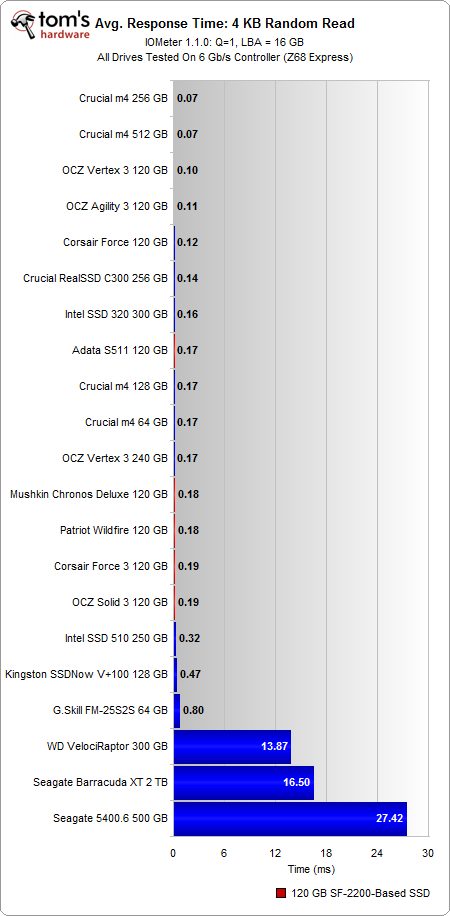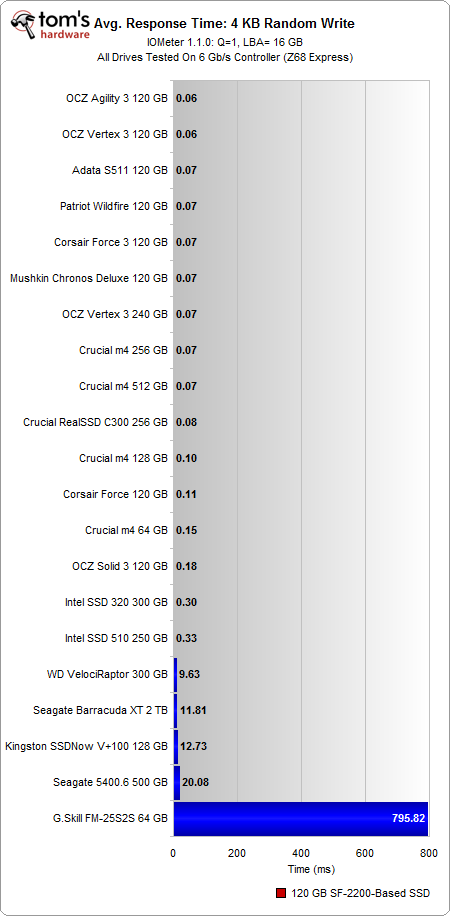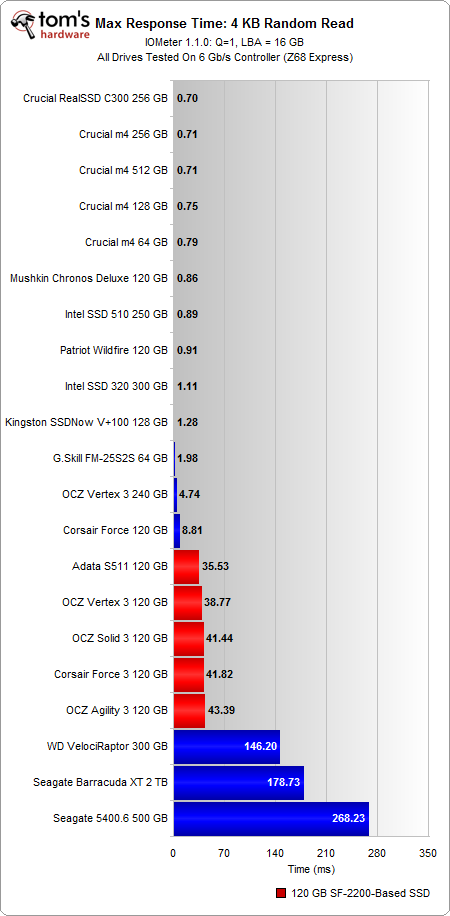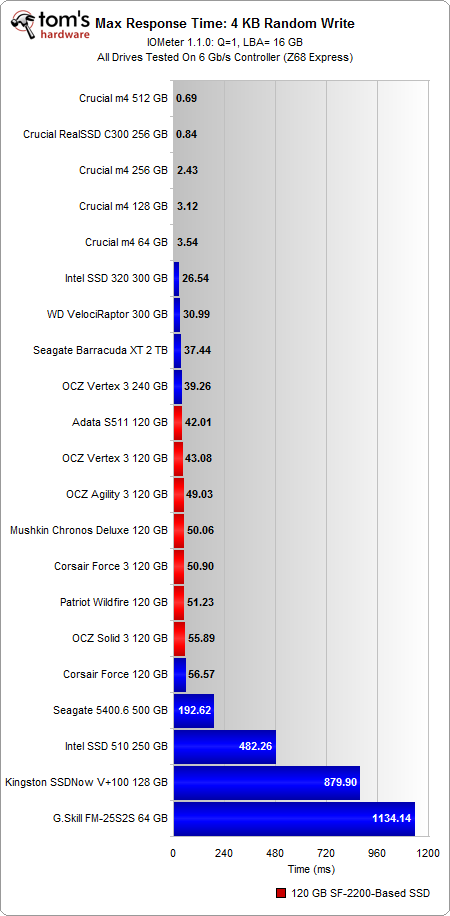Second-Gen SandForce: Seven 120 GB SSDs Rounded Up
Benchmark Results: 4 KB Random Performance (Response Time)
It's wrong to look at data rates (throughput) without taking latency and processing time into account. We've explained this before in our tablet reviews with regard to Wi-Fi throughput, but the same concept applies to storage. Let's go back to the analogy of a phone call, because it easily illustrates why there's more to speed than just throughput.
Throughput is the audio quality. Latency is the amount of time from when you speak into the phone until the person on the other side hears you, and processing time is the delay for the person on the other line to think about what you said before answering back. If we apply this to SSDs, throughput is the amount of data you can send over time, latency is the lag due to data transmission, while processing time is the overhead incurred by the SSD when it receives the data.
Now consider that latency plus processing time equals response time. That's really what we're measuring in Iometer. This can get confusing because Iometer uses the terms latency and response time interchangeably, but it's really only capable of measuring the latter.
In random reads, the Vertex 3 and Agility 3 have a response time of about .10 ms, which is 30% slower than what we see on the higher-capacity m4s. In comparison, the other second-gen SandForce SSDs have response times slightly under .20 ms.
Turning to random writes, nearly all these drives have response times around .07 ms, while the Solid 3 falls behind (.18 ms), presumably due to its firmware-based differences.
Response time is a measure of the difference between initiating and completing an operation, while throughput is a measure of the amount of data transferred. These two values affect performance in different ways, but they don't stack up. So, it's not like the 64 GB m4 "feels" 75% slower than the 128 GB m4 (25% slower throughput plus 50% slower response time). Throughput and response time are usually correlated in that you get high throughput with low response time.
The maximum response time offers a look at the extremes. In random reads, the Crucial m4s all lead, but the SSD 510, Wildfire, and Chronos Deluxe aren't too far behind.
Get Tom's Hardware's best news and in-depth reviews, straight to your inbox.
It's worth noting that of the second-gen SandForce-based SSDs, Patriot and Mushkin are the only ones to use memory that doesn't come from IM Flash Technologies, the joint venture between Intel and Micron. Both drives employ synchronous Toggle Mode DDR memory from Toshiba, which may help explain the low response times compared to the S511, Vertex 3, Agility 3, Solid 3, and Force 3.
As we might expect, the new 120 GB SandForce-based drives tend to clump together, with maximum write response times between 42 ms to 55 ms. Given the identical controller architecture and similar firmware design, this shouldn't be a surprise. However, these numbers indicate that there's more garbage collection occurring immediately after every write operation than we see from the Marvell or Intel controllers.
This is a double-edged sword. You can either perform garbage collection right after a write access or postpone the action to when the drive is idle. If you rely more heavily on idle garbage collection, performance goes up at the cost of increased write amplification. Conversely, active garbage collection minimizes write amplification, but taxes performance.
Current page: Benchmark Results: 4 KB Random Performance (Response Time)
Prev Page Benchmark Results: 4 KB Random Performance (Throughput) Next Page Benchmark Results: 128 KB Sequential Performance


